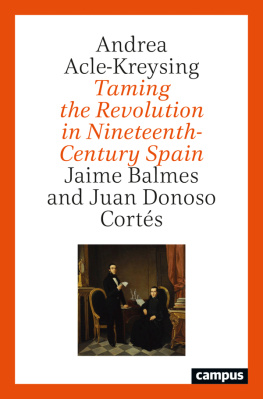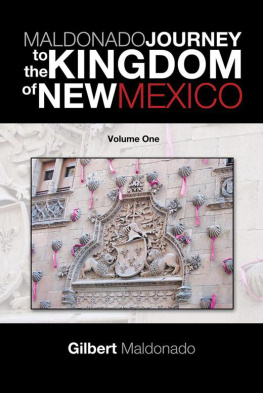Franciscan Spirituality and Mission in New Spain, 15241599
For Ruth, Alejandro, and Gabriel
Franciscan Spirituality and Mission in New Spain, 15241599
Conflict Beneath the Sycamore Tree (Luke 19:110)
STEVEN E. TURLEY
Rice University, USA
First published 2014 by Ashgate Publishing
Published 2016 by Routledge
2 Park Square, Milton Park, Abingdon, Oxon OX14 4RN
711 Third Avenue, New York, NY 10017, USA
Routledge is an imprint of the Taylor & Francis Group, an informa business
Copyright Steven E. Turley 2014
Steven E. Turley has asserted his right under the Copyright, Designs and Patents Act, 1988, to be identified as the author of this work.
All rights reserved. No part of this book may be reprinted or reproduced or utilised in any form or by any electronic, mechanical, or other means, now known or hereafter invented, including photocopying and recording, or in any information storage or retrieval system, without permission in writing from the publishers.
Notices
Product or corporate names may be trademarks or registered trademarks, and are used only for identification and explanation without intent to infringe.
British Library Cataloguing in Publication Data
A catalogue record for this book is available from the British Library
The Library of Congress has cataloged the printed edition as follows:
Turley, Steven E.
Franciscan Spirituality and Mission in New Spain, 15241599: Conflict Beneath the Sycamore Tree (Luke 19:110) / by Steven E. Turley.
pages cm.(Catholic Christendom, 13001700)
Includes bibliographical references and index.
ISBN 978-1-4094-5421-2 (hardcover: alk. paper)
1. FranciscansMissionsNew SpainHistory. 2. FranciscansSpiritual life.
I. Title.
BV2835.3.T87 2013
271.3072dc23
2013011290
ISBN 9781409454212 (hbk)
Contents
Series Editors Preface
Catholic Christendom, 13001700 counter-balances the traditional, still-influential understanding of medieval (or Catholic) and reformation (or Protestant) religious history that has long resulted in neglect of the middle ground, both chronological and ideological. Continuities between the middle ages and early modern Europe remain overlooked or underestimated, in contrast to the radical discontinuities, and in studies of the later period especially, the identification of reformation with various kinds of Protestantism too often leaves evidence of the vitality and creativity of the Catholic church, whether in its Roman or local manifestations, out of account. The series therefore covers all varieties of religious behavior, broadly interpreted, not just (or even mainly) traditional institutional and doctrinal church history, and is to the maximum degree possible interdisciplinary, comparative and global, as well as non-confessional. The goal is to understand religion, primarily of the Catholic variety, as a broadly human phenomenon, rather than as a privileged mode of access to superhuman realms, even implicitly.
The period covered, 13001700, embraces the moment which saw an almost complete transformation of the place of religion in the life of Europeans, whether considered as a system of beliefs, as an institution, or as a set of social and cultural practices. In 1300, vast numbers of Europeans, from the pope down, fully expected Jesuss return and the beginning of His reign on earth. By 1700, very few Europeans, of whatever level of education, would have subscribed to such chiliastic beliefs. Pierre Bayles notorious sarcasms about signs and portents are not idiosyncratic. Likewise, in 1300 the vast majority of Europeans probably regarded the pope as their spiritual head; the institution he headed was probably the most tightly integrated and effective bureaucracy in Europe. Most Europeans were at least nominally Christian, and the pope had at least nominal knowledge of that fact. The papacy, as an institution, played a central role in high politics, and the clergy in general formed an integral part of most governments, whether central or local. By 1700, Europe was divided into a myriad of different religious allegiances, and even those areas officially subordinate to the pope were both more nominally Catholic in belief (despite colossal efforts at imposing uniformity) and also in allegiance than they had been four hundred years earlier. The pope had become only one political factor, and not one of the first rank. The clergy, for its part, had virtually disappeared from secular governments as well as losing much of its local authority. The stage was set for the Enlightenment.
Thomas F. Mayer,
Founding Series Editor
Acknowledgements
I wish to thank the staffs of the many collections upon which this study draws: Memorial Library at the University of WisconsinMadison; Fondren Library at Rice University; the Nettie Lee Benson Latin American Collection at the University of TexasAustin; the Biblioteca Nacional de Espaa; the Archivo Histrico Nacional; the Real Academia de Historia; the Archivo General de Indias; the Biblioteca Nacional de Mxico; the Biblioteca Nacional de Antropologa e Historia; the Archivo General de la Nacin; and the Archivo Histrico de la Provincia del Santo Evangelio de Mxico. Especially crucial to my progress was the staff of the Interlibrary Loan office at Memorial Library, the University of WisconsinMadison, who tracked down innumerable obscure references for me.
I am also deeply grateful to the institutions and organizations who provided financial support for my research. At the University of Wisconsin, these include the Graduate School; the Department of History; the Latin American, Caribbean and Iberian Studies Program; and the Center for German and European Studies. In addition, the American Catholic Historical Association and the Program for Cultural Cooperation between Spains Ministry of Culture and United States Universities provided funds for summer research travel. I am especially grateful to the Doris G. Quinn Foundation, which provided a living stipend for my final year of writing. Adam Beaver, Vernica Gutirrez, and Jonathan Truitt gave me practical orientation to various collections. In Madrid, James Amelang, Hiplito Barrigun, Pilar Ryan, Antoln Abad Prez, and Mara del Mar Graa Cid all made time to discuss my project. Jodi Bilinkoff and John Schwaller have provided wise guidance at several stages of this project, and Francisco Morales gave me the warmest of welcomes in Cholula, together with important insights at a crucial stage in the writing process. Finally, in Madison, I am grateful to Jim Schlender and Camarin Porter, who both supported my work in so many ways.
I wish especially to thank my mentors at the University of WisconsinMadison. Mustafa Emirbayer and Matthew Desmond alerted me to the importance of habitus for my analysis. Johann Sommerville and William Courtenay played an important guiding role throughout my career there. Stanley Payne and Robert Frykenberg agreed to take time from their retirement to read this book, and I greatly value their long perspective on Spanish history and missions history. Lee Palmer Wandel encouraged me not to be constrained by any notion of what a European historian ought to study, and then stretched my thinking and sharpened my analysis as I pursued my own path. Her wisdom and friendship remain invaluable to me.
Finally, I owe a tremendous debt to my family. I got my first taste of research when, in middle school, my mother enlisted my help in typing my fathers dissertation from a handwritten manuscript. My sons, Alejandro and Gabriel, have forced me to work in a more disciplined manner than I would have imagined possible. They have also given me a perspective that allowed me to shut down my laptop regularly for evenings of silliness. My life is infinitely richer for their existence. Their mother, my wife now of eighteen years, Ruth Lpez Turley, has supported me financially, intellectually, emotionally, and spiritually. This project would have bogged down permanently without the encouragement, enthusiasm, and wisdom of my soul mate.




